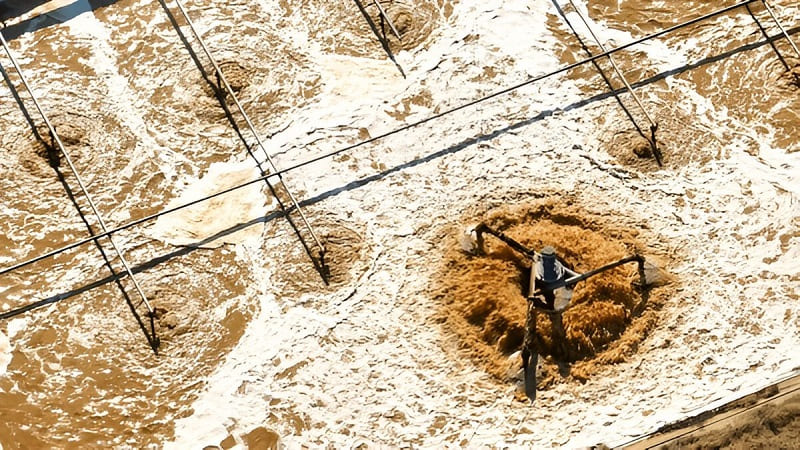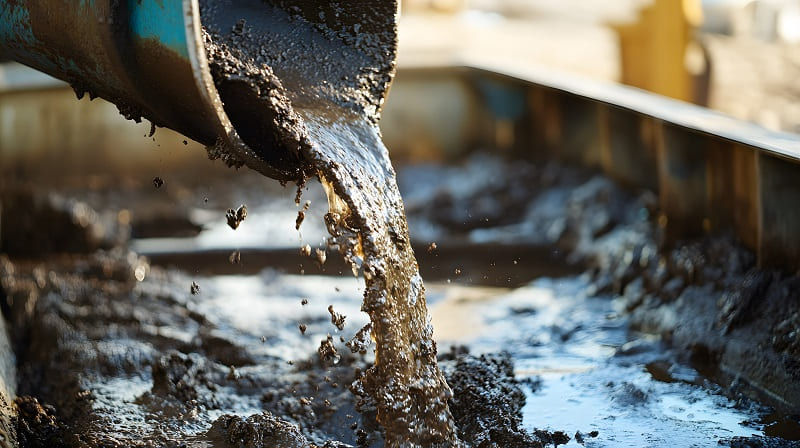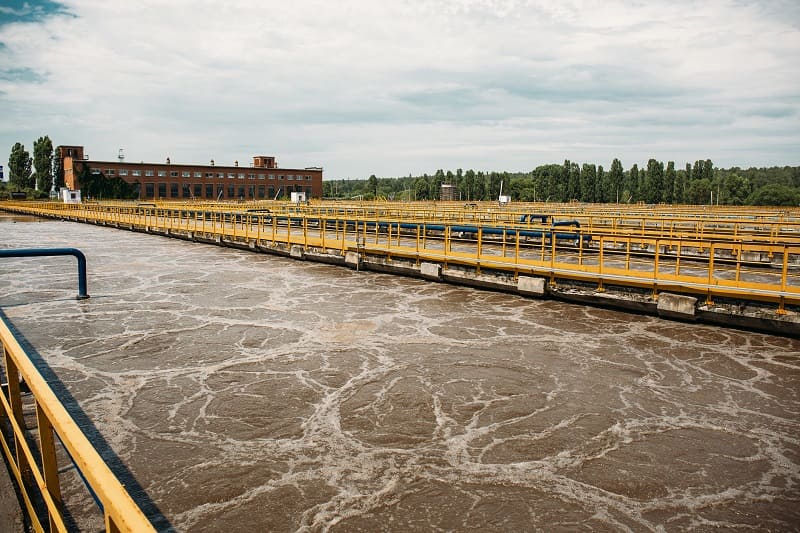Sludge: it’s kind of what it sounds like— the semi-solid, goopy mixture leftover after sewage or industrial waste is processed. It typically contains water, microorganisms, and pathogens, and can even contain heavy metals and other chemicals. For wastewater treatment plants, sludge dewatering is an essential component of what the treatment plant does. It takes contaminated water and sewage byproducts and essentially cleans the mixture so that it can be reused. If reuse is not possible, it prepares the mixture for proper disposal. In order to make that happen, wastewater treatment plants employ a process known as sludge dewatering.
What Is Sludge Dewatering?
Sludge dewatering is a process used by wastewater treatment facilities to convert the heavy liquid sludge into a lighter, drier, and more solid material. This process is necessary to make transporting, handling, and disposing of it easier and more economical. It also requires less energy to move it because it isn’t so heavy and cumbersome.
Why Sludge Dewatering Is Essential?
Outside of reducing the sludge volume, which makes it lighter, more cost-effective to move and haul, and easier to handle, it also improves environmental compliance. Because the sludge is converted to a more solid state as a result of the sludge dewatering process, there is less of a chance for contaminated runoff or leachate.
Furthermore, converting sludge into a drier, more solid state makes it easier to compost, incinerate, or undergo stabilization, a process of energy recovery through anaerobic digestion.
Handling sludge properly is critical because not doing so can pose serious health risks to the general public, contaminate groundwater, and harm other environmental aspects. This creates a problem for both the company and its affiliates due to the toxicity of the substance.
Common Dewatering Methods and Technologies
There are several ways for sludge dewatering to occur. Some require significant energy output, whereas others allow the dewatering process to happen more naturally.
1. Belt filter press
Belt filter presses are used as one method of sludge dewatering. This involves squishing the sludge through belts and filters. This is ideal for high volumes of sludge, as it requires minimal energy, but may produce lower solids yields and necessitate regular maintenance and cleaning.
2. Centrifuge

A centrifuge is another method of sludge dewatering that involves spinning the sludge at a high rate of speed to separate the solid from the liquid waste. This is a high-energy process, but it is beneficial because it can handle various types of sludge, the centrifuge is relatively compact, and it can process high volumes of sludge. Due to its expensive setup, which also requires trained professionals for operation, this is best suited for operations with a high budget for sludge dewatering.
3. Screw press
A screw press operates much like its name suggests. It uses an auger to squeeze the sludge through a perforated cylinder, filtering the sludge and completing the sludge dewatering process. The process is quiet, low-energy and low-cost, but not particularly ideal for sludge with unpredictable composition or in situations where sludge needs to be dewatered rapidly, because it is a slower process.
4. Geobags
Some wastewater treatment uses geotextile bags or “geobags” to complete sludge dewatering. This basically involves putting the sludge in a fabric bag, allowing the liquid to filter out over time. This process is slow, low-cost, and simple; however, it requires a large outdoor area to be effective.
5. Drying beds
Finally, drying beds are basically a bed made of sand or gravel that allows the sludge to air-dry and separate. Drying beds offer a natural sludge dewatering process but require a lot of land, favorable weather, and can be very time-consuming. This would not be appropriate for industrial sludge that is laden with chemicals that could leach into groundwater.
Considerations in Choosing A Dewatering Method

When selecting a sludge dewatering method for wastewater treatment, several factors should be considered. First and foremost, the type and volume of sludge are going to be a major factor when choosing which method to use for wastewater treatment because the needs of industrial, agricultural, and chemical sludge are all unique. Facilities should also consider the end use of the sludge, and whether it can be filtered and reused or if it will need to be properly disposed of.
Additionally, when considering which sludge dewatering method to choose for wastewater treatment, the operational budget, including costs and energy output capability, is also an essential factor in the decision-making process, along with the available space and infrastructure for sludge dewatering.
Regulations and Environmental Requirements
Sludge dewatering is regulated by environmental protective agencies, and wastewater treatment facilities must strictly adhere to EPA guidelines, the Clean Water Act, and for industrial facilities, they must also adhere to the regulations outlined in the Resource Conservation and Recovery Act.
The EPA’s job is not only to ensure regulatory compliance with these Acts, but also to ensure that toxic sludge is handled appropriately and won’t pose a threat to people, animals, or the environment. In fact, there is a specific section within the Clean Water Act that addresses sewage sludge and outlines the requirements for handling and treating it.
Handling sludge properly is important, and not doing so would put the facility in violation of these federal regulations. Noncompliance could result in an unexpected shutdown, fines, and even lawsuits, especially if there is evidence of harm to the environment, animals, or community.
Not only is there a legal and financial component, but failing to abide by these regulations could have a significant negative impact on the environment, creating public health risks or disease outbreaks, contaminating groundwater and soil, and harming wildlife that would be affected by the contamination.
Trust Sludge Dewatering Experts for Your Wastewater Treatment
Sludge dewatering is an essential component of wastewater management, not just for the operational efficiency of the facility, but to maintain compliance with environmental regulations. It’s important to choose the right method of sludge dewatering for your wastewater treatment. If you’re not sure or could use a consultation from experts, contact Environmental Remedies today for more information about our sludge dewatering services.






